
di Santo Scalia

«[…] Il 27 maggio 1911, dopo un breve periodo di attività, detta hawaiana per la somiglianza con i fenomeni del vulcano Kilauea, si apriva sul fianco nord-est del cratere centrale una grande voragine di sprofondamento, e nel contempo nel lato nord-est si aprivano delle piccole fratture. Ma si dovette aspettare il 9 settembre perché la nuova bocca entrasse in piena attività lanciando in aria grandi masse di lava […] che raggiunsero i due mila metri di altezza […]». Scrive così Antonio Cavallaro, studioso e cultore delle “cose” di Linguaglossa nel suo Eruzioni storiche nel territorio di Linguaglossa.
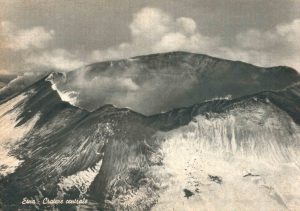
Era nato così il Cratere di Nord Est, primo dei crateri subterminali dell’Etna. Fino ad allora alla sommità del vulcano c’era un unico, grande cratere: il Cratere Centrale.
Altri crateri terminali e subterminali si sono poi formati: nell’estate del 1968 la Bocca Nuova (una depressione di appena una decina di metri poi allargatasi a dismisura); nel 1971, in concomitanza con la grande eruzione dell’aprile-giugno, si è aggiunto anche il cratere subterminale di Sud-Est, seguito dal Nuovo Cratere di Sud- Est (o Sud-Est Orientale) nel 2009, e dal cosiddetto Cratere della Sella, nato tra il 2016 ed il 2017, e facente parte dello stesso complesso craterico.
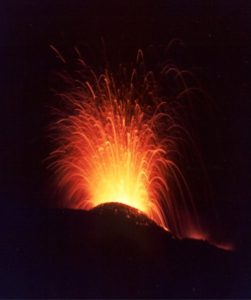
Così come più recentemente il Cratere di Sud Est (vedi Il Vulcanico 18 aprile scorso), anche il Cratere di Nord-Est è stato in passato teatro di alcuni incidenti, uno dei quali mortale: il 2 agosto del 1929 una comitiva di escursionisti fu sorpresa da una improvvisa esplosione e si registrarono due vittime. Nel 1968, il 28 settembre, Walter Frodl, turista tedesco, fu più fortunato: colpito alla schiena da un masso di modeste dimensioni lanciato da una più intensa esplosione, fu soccorso e salvato.
Dal 1966 fino ai primi giorni dell’aprile del 1971 il Nord-Est è stato la principale sede di attività persistente. Dopo una pausa ed in seguito a nuove manifestazioni esplosive il cratere ha raggiunto l’altezza di 3345 metri (Villari 1982), rappresentando per anni la massima elevazione dal nostro vulcano. Più di recente l’altezza si è attestata sui 3330 metri s.l.m. (Behncke 2014).
Quelle che seguono sono alcune immagini del “giovane” Cratere di Nord -Est nei primi decenni del XX° secolo, quando non aveva ancora assunto la classica forma conica, tipica dei crateri esplosivi.
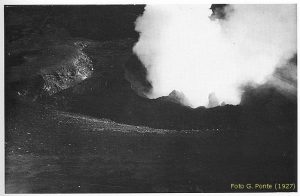
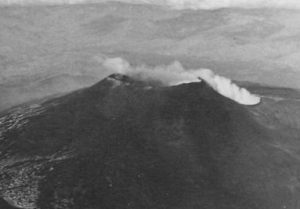
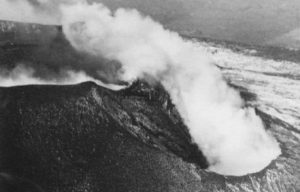
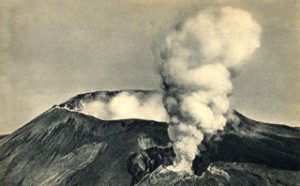
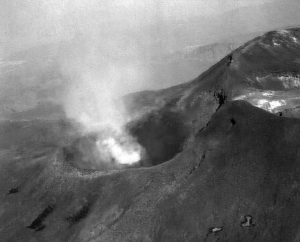
Nei decenni seguenti del secolo scorso e nei primi dell’attuale, il Nord-Est è cresciuto, collassato e ricresciuto più volte, anche se l’attività esplosiva (spesso parossistica) si è concentrata al Sud-Est. Per concludere, ecco due mie foto recenti del cratere che, ricordiamolo, compie oggi ben centosette anni!
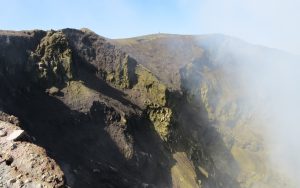

Con il titolo, una foto scattata al Cratere di Nord Est da Haroun Tazieff nel 1956. Nella sequenza della gallery, le cartoline postali dalla mia collezione personale, con il Nord Est nel 1924, prima del 1934, la Voragine e altre immagini successive del primo cratere subterminale dell’Etna.
___________________________
by Santo Scalia
«[…] On May 27, 1911, after a brief period of activity, called Hawaiian for the similarity with the phenomena of the volcano Kilauea, it opened on the north-east flank of the central crater a large chasm of sinking, and at the same time on the north-east side were opened small Fractures. But it had to wait until 9 September because the new mouth entered into full activity launching in the air large masses of lava […] which reached the two thousand meters of height […]». Thus writes Antonio Cavallaro, scholar and connoisseur of the “things” of Linguaglossa in its Historical eruptions of Linguaglossa.
North East Crater, the first of Etna’s subterminal craters was born. Until then at the top of the volcano there was a single, large crater: the Central crater.
Other terminal craters and Subterminals were formed. In the summer of 1968, the Bocca Nuova (a depression of just ten meters then allargatasied out of proportion); in 1971, coinciding with the great eruption of April-June, the subterminal is also added to the Southeast Crater, followed by the New South-east (or Southeast) crater in 2009, and the so-called Saddle crater, which was born between 2016 and 2017, and making part of the same crater complex.
As most recently the Southeast crater , the North-east crater has been in the past the scene of some accidents, one of which was deadly: on 2 August 1929 a group of walkers was surprised by a sudden explosion and two victims were recorded. In 1968, on September 28, Walter Frodl, German tourist, was luckier: shot in the back by a boulder of modest size launched by a more intense explosion, was rescued and saved.
From 1966 until the first days of April of 1971, the Northeast Crater was the main place of persistent activity. After a break and following new explosive events, the crater reached a height of 3345 meters (Villari 1982), representing for years the maximum elevation from Etna volcano. More recently, the height has stood at 3330 meters above sea level (Behncke 2014).
In the following decades of the last century and early today, the Northeast Crater has grown, collapsed and regrown several times, although the explosive activity (often paroxysmal) has concentrated in the Southeast. Happy birthday to North East Crater of Mount Etna, it today makes 107 years !
With the title, a photo taken at the North East crater by great volcanologist Haroun Tazieff in 1956. In the sequence of the gallery, the postcards from my personal collection, with the North East in 1924, before the 1934, the Voragine and other subsequent images of the first Mount Etna subterminal Crater.


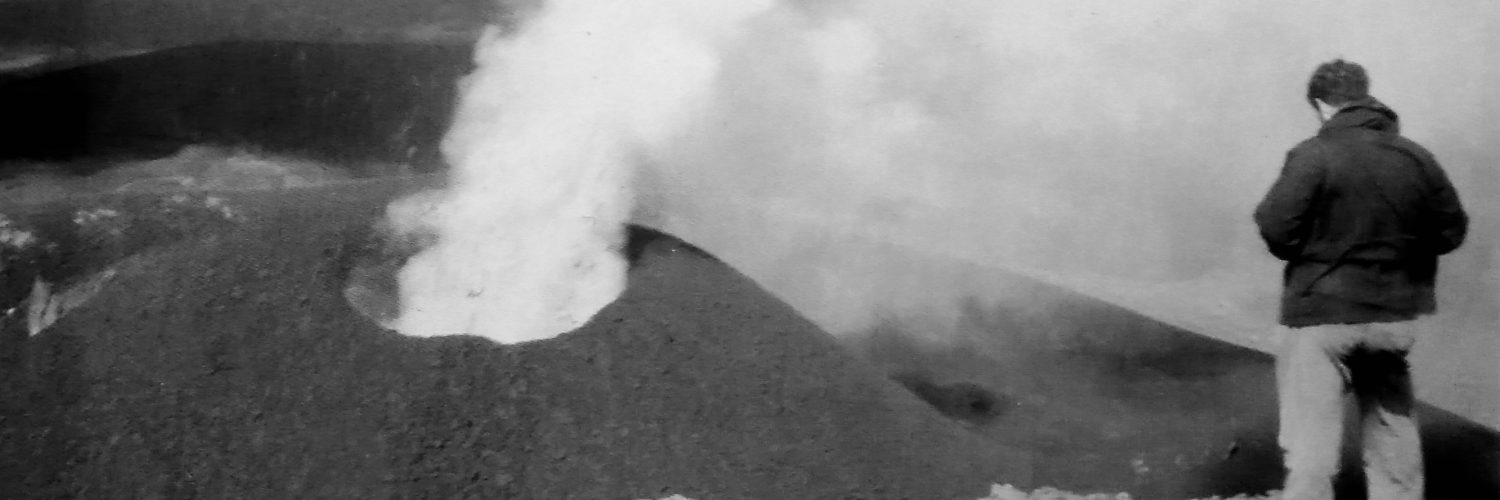
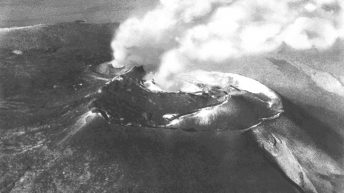
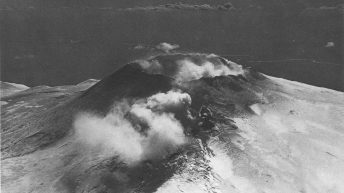
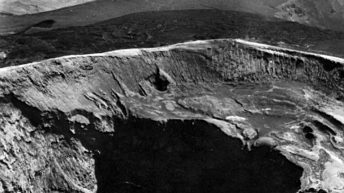
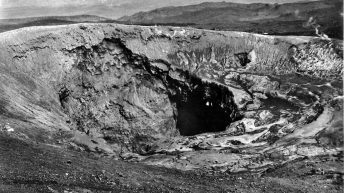
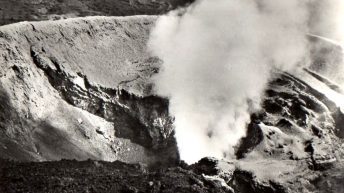
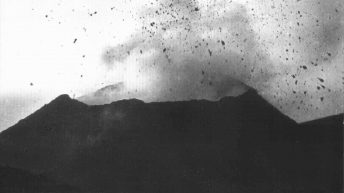
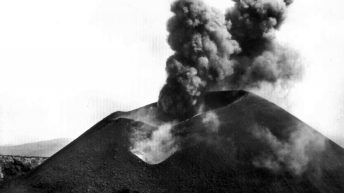
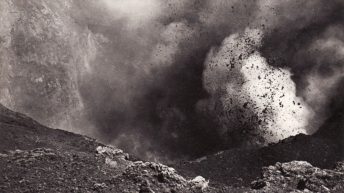
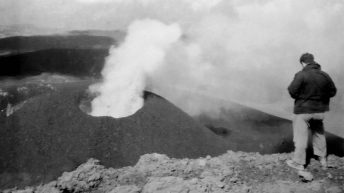

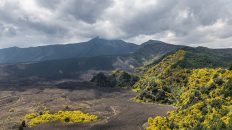


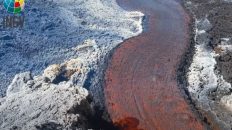
Commenti recenti